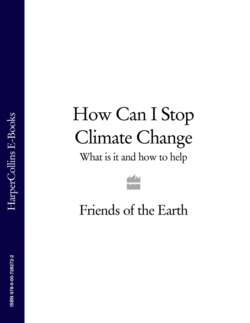Читать книгу How Can I Stop Climate Change: What is it and how to help - Литагент HarperCollins USD, F. M. L. Thompson - Страница 101
farmland
ОглавлениеAccording to government figures, agriculture is responsible for 8 per cent of the UK’s greenhouse gas emissions. This is largely from methane and nitrous oxide rather than energy use.
Intensive farming relies on chemical fertilisers, which increase the amount of the greenhouse gas nitrous oxide in the atmosphere. Fertiliser production is the largest source of nitrous oxide emissions in the world and producing fertiliser itself relies heavily on fossil fuels. Making and transporting fertilisers is the largest source of carbon dioxide emissions in the farm sector, but these emissions are not included in the government’s figures for agricultural emissions. Sheep and cows emit methane as a result of the digestive process, resulting in high levels of emissions from livestock and dairy farming.
Meat farming is responsible for two thirds of the nitrous oxide and more than a third of the methane associated with human activity. One study found that every 1 kg of beef produced results in emissions of more than 36 kg of carbon dioxide equivalent: two-thirds of the energy used goes to produce and transport cattle feed. Producing food for livestock and clearing land for grazing is having a huge impact on valuable forests. Greenhouse gas emissions from livestock have been put at around 18 per cent of the global total. And demand for meat is rising, especially in the developing world: meat production is predicted to double between 2000 and 2050.
